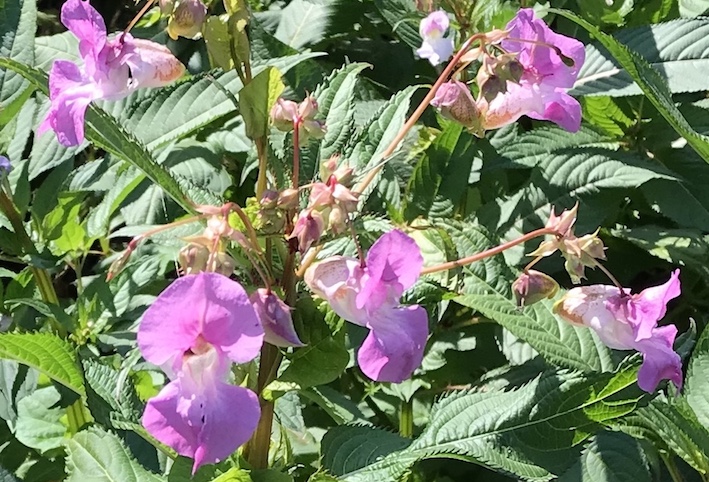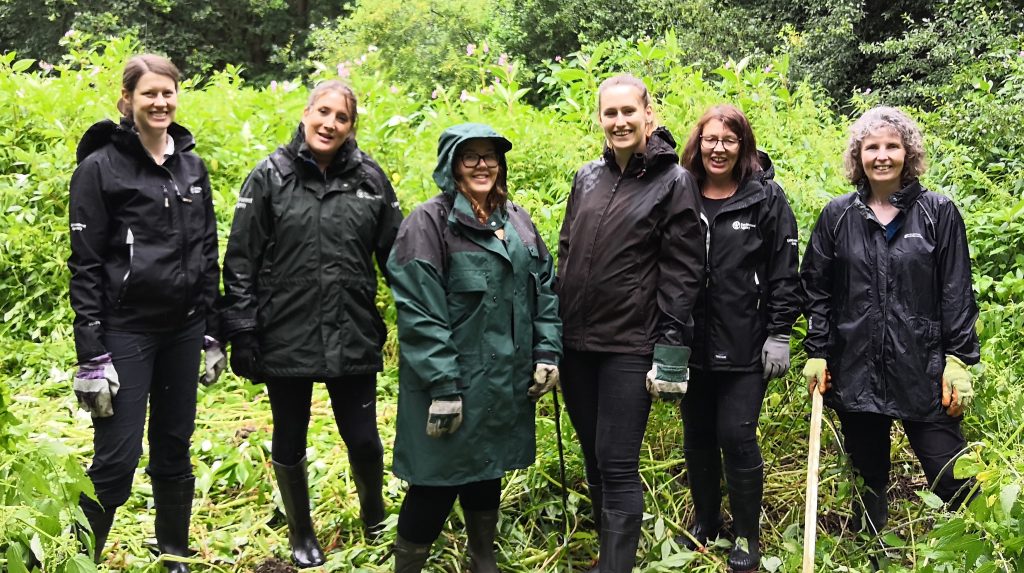
What is Himalayan Balsam?
Himalayan Balsam is an invasive non-native plant, that mainly grows along river banks and in damp woodland. The plant poses a big risk to the environment as it can kill other native plants by taking essential nutrients, light and space. It can also grow as high as your head and spread quickly if it isn’t removed. The damage can be huge as it can enter the river channel and block waterway, which increases the risk of flooding.
Year of Green Action (YoGA)
The Year of Green Action is a year-long drive to get more people involved in projects that improve the natural world.

Having volunteers complete this work has helped improve the river biodiversity, saved money and made a huge difference to the Defence estate. It also meets the aims of YoGA by getting people out of the office and into the countryside and encouraging volunteering activities that help to improve the environment. This is a great example of how DIO and the Environment Agency have worked together to protect and preserve the Defence estate.
If you would like to assist the DIO conservation group with future events, please contact the team.
3 comments
Comment by Nikaesh Rattan posted on
Increased Chances of flooding can occur on river banks if the Himalayan Balsam is left to flower as it is an invasive non-native plant that grows alongside river banks.
Great work carried out by volunteers of the Environment Agency.
Comment by Gordon posted on
You should come to the river Axe, near Axminster, absolutely swimming in the stuff, it’s everywhere ??
Comment by H B posted on
Why aren't people being prosecuted for not taking steps to eradicate it # how do we make people remove it# i spend hours keeping it out of my stretch of river but those up stream do nothing with vast areas of it which obviously floes down stream to my patch of cleared water